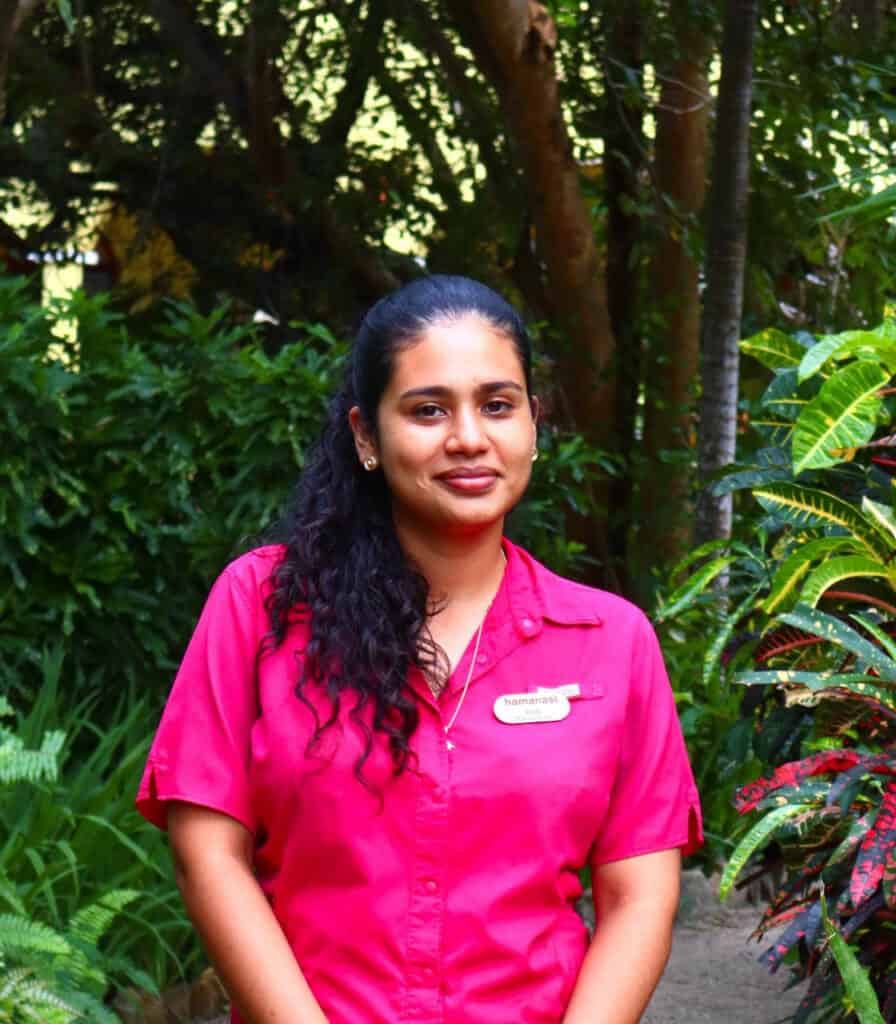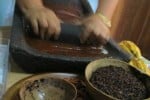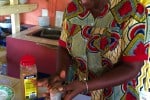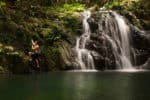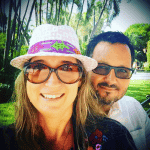We sat down with Hamanasi’s new Regenerative Ambassador, Areli Perez, to understand what draws her to protecting the environment and communities, and what led her to Hamanasi. From humble beginnings where sustainability was an integral part of life to project managing environmental and community NGO grants to leading Hamanasi’s next phase in its regenerative journey, Areli shares with us her story, passion and goals.
How did you become interested in sustainability?
I grew up of modest means in the small northern village of Corozal Bay. We had our own vegetable garden and my grandmother raised chickens. Farm to table was a part of my life from birth! Nothing went to waste. My mother saved so much. When I would ask, “Why?,” she would tell me to wait and see. A week later we would be using saved items for arts and crafts projects or for repairing something. Given our tight budget, we always conserved water and electricity. A certain standard of cleanliness was an important family value.
Later, when I went to school, I met students who did not have the same experiences as me. I noticed other kids of all economic backgrounds littering and being careless with their possessions. It was so wasteful! My awareness that others did not see things the same way as I did made me commit to initiating change.
Where did you go to school and what did you study?
Initially, I studied sociology at St. John’s Junior College in Belize City. I had envisioned studying psychology and sociology abroad, but due to family reasons I was unable to. Because I loved environmental projects, I decided to study natural resource management at the University of Belize in the capital city of Belmopan. Immediately, I immersed myself in various activities, e.g., the youth leadership group of the Belize Institute for Environmental Law & Policy (BELPO), doing marine surveys with the Toledo Institute for Development and Environment (TIDE), belonging to environmental clubs, the school newspaper, the literature group, etc. Many of the sustainability projects we did were very practical, like focusing on not wasting, reusing, conserving water and electricity.
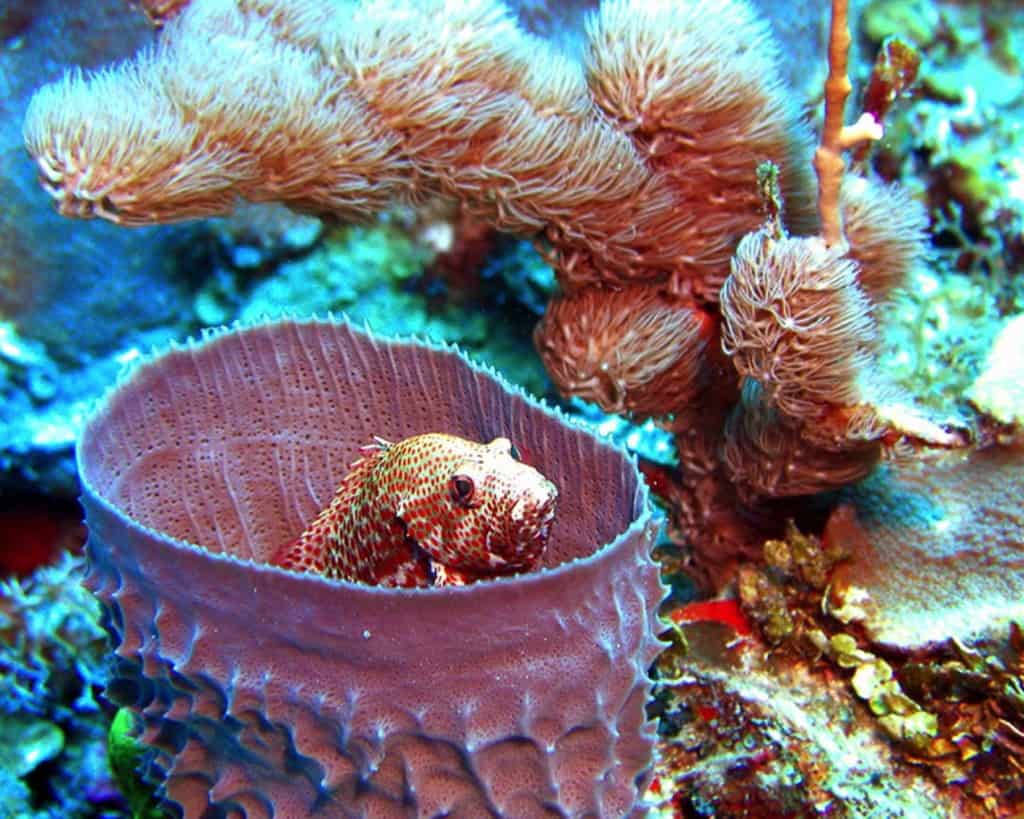
After you completed your studies, where did you work?
My first job after college was working as an environmental assistant for the shrimp farm Belize Aquaculture, Ltd. A year and half later, I was promoted to Environmental Administrator and was responsible to ensure that the company’s environmental standards were met and in compliance. I also had to meet regularly with community leaders to see if they had concerns or needs. Unfortunately, the farm was struck with EMS and my position was eliminated.
Then, I began to work as a Conservation Programme Officer for the Protected Areas Conservation Trust (PACT). PACT’s mission is to manage Belize’s protected areas through partnerships and high impact investments and ensure sustainable development. I project managed programs that were implemented by local NGOs from planning to completion. I would review grant proposals, make recommendations, follow projects to ensure that deliverables and goals were met, etc. Hamanasi guests will have the opportunity to see some of this work done by the Mayflower Bocawina Environmental & Development Group. About two years ago their new board created a vision to bring more tourism to the Mayflower Bocawina National Park. This included building and creating a new camping ground, a better parking lot, adding restrooms, etc.
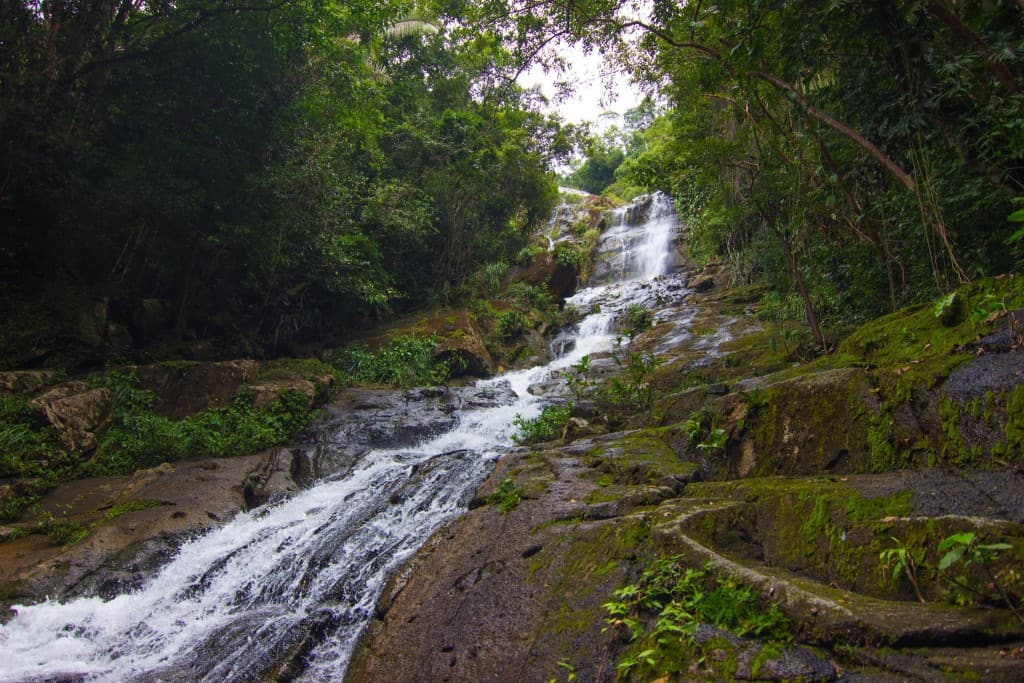
What brought you to Hamanasi?
I always admired Hamanasi’s vision and goals. After leaving the aquaculture industry, I had hoped to become involved with the tourism industry as an environmental steward. I love to travel, and tourism attracted me. Furthermore, I wanted to move back to southern Belize to be closer to my son and his father. Unfortunately, there were no jobs available in that capacity in tourism at that time. When I later saw that the position of Sustainability Manager was available at Hamanasi, I applied immediately.
But your title is Regenerative Ambassador?
Yes, Hamanasi is a regenerative resort and a member of the Regenerative Resorts hotel collective. A regenerative resort aims to go beyond basic eco-friendly initiatives to implementing projects and plans that not only sustain what is already in place, but enhance them. It brings our communities and natural environments to an improved state. It is important to understand the history of a place — what it is and what it wants. It incorporates best practices into the culture that already exists. Hamanasi was doing regenerative things all along, but used the terminology “sustainability”. We now want to call out that our goal is to regenerate, not merely sustain.
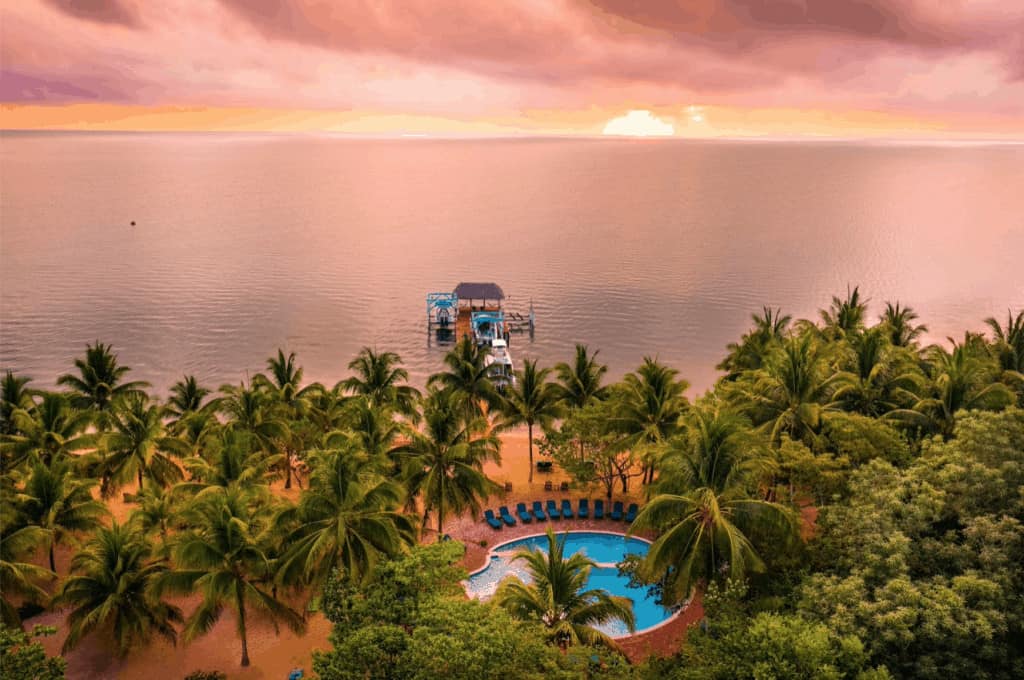
Tell me more about Regenerative Resorts….
Regenerative Travel is a collective of independently owned and operated boutique luxury hotels around the world that implement regenerative practices. And there are some great ones out there! For example, Playa Viva in Mexico is completely off grid. Finca Luna Nueva in Costa Rica has regenerative farming practices and measures the amount of carbon captured. Alladale in Scotland is helping to reforest and rewild the Scottish highlands.
With Regenerative Resorts we do monthly measurements of our impact in areas of energy, water, community, etc. The hoteliers meet regularly and share best practices.
What are some examples of Hamanasi’s eco initiatives?
Sometimes the simpler things are the most important. I love Hamnasi’s farm to table program. The fact that we grow organic food right by the seaside is a huge plus for our guests and employees and a great example of what is possible. Additionally, Hamanasi has eliminated single use plastic (except for some of our COVID PPE). Instead, we have locally made bamboo straws, reusable water bottles, glass storage containers, etc. There is a big focus on reduction, upcycling and recycling of waste. Sometimes, we have to get creative with this! For example, we crush glass and add it as an aggregate to concrete for our treehouse foot paths.
One of the most regenerative eco initiatives is our reforestation. We have planted thousands of trees and bushes on property, which has expanded our coastal forest (littoral forests are one of the most threatened forests worldwide due to coastal development). As a result, the amount of birds and wildlife has increased. We have resident animals that were never here when Hamanasi opened, such as coatimundis, agoutis, kinkajous, parrots and more. Reforestation allows for rewilding.
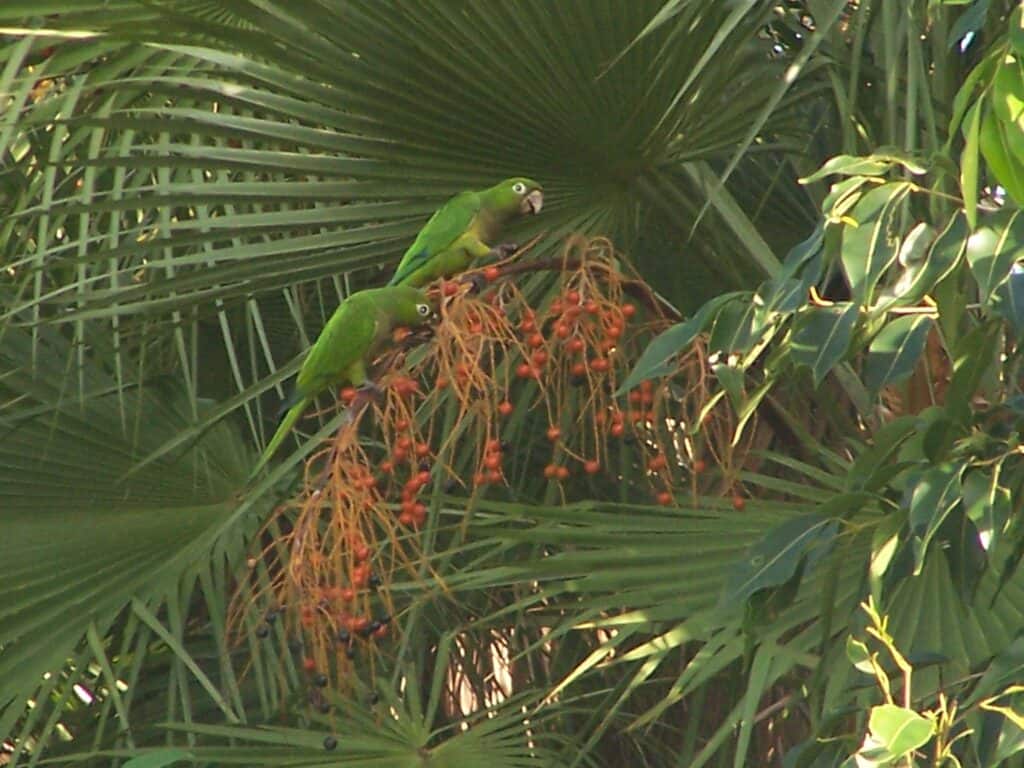
What are some of the best examples of Hamanasi’s social initiatives?
Hamanasi’s wellness program is a comprehensive initiative to address physical and mental health, as well as nutrition and fitness. Each month we partner with the Belize Family Life Association to offer a free medical clinic for employees. Employees can get basic health markers checked and learn about the focus of the month. Topics have included breast cancer, HIV/AIDS, domestic violence, eye exams and more. Like elsewhere around the world, mental health issues often go unaddressed. We have a licensed therapist come regularly to meet with any employee who wishes — this is unheard of in Belize! We’ve hired an expert nutritionist and trainer to teach our employees about healthy eating, cooking and exercise habits. We also have fun events, like volleyball tournaments, 5K runs, sea kayaking races, etc. This knowledge has empowered our staff to take charge of their health, and this spreads to their families and the community.
For the community, we have a Backpack to School project whereby we give backpacks filled with school supplies to needy children. This is done with the help of our guests through our Pack for a Purpose program. We support many NGOs’ work, such as the Hopkins Belize Humane Society, The Nature Conservancy in Belize, World Pediatric Project and more. Many of our tours highlight the culture and traditions of local communities. For example, our Che’il Mayan Chocolate Tour visits a Mayan farm and guests make chocolate utilizing ancient techniques. During our Garifuna Cooking Class, guests learn about the history and culture of the Garinagu and create a delicious meal the traditional way.
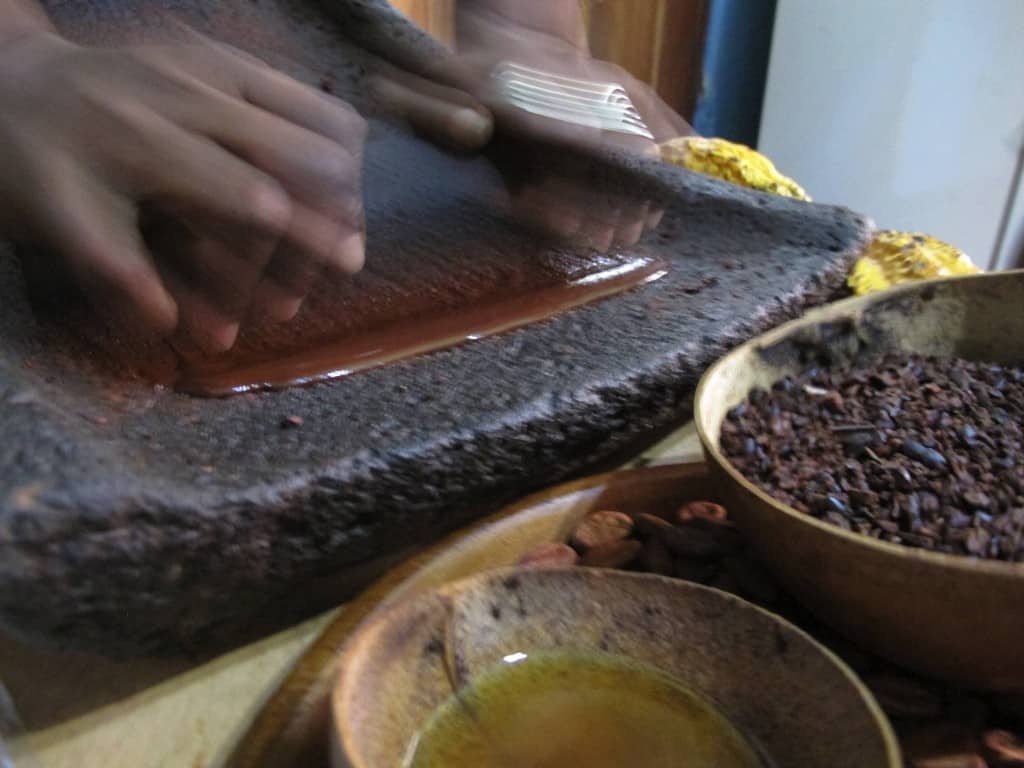
What plans do you have for your work at Hamanasi?
I have two main goals. First, I want to expose our staff and the community members to the benefits of sustainable and regenerative practices. I want people to truly understand why we do what we do. Second, I want to expand our social initiatives — a healthy, happy community is more willing to work towards environmental progress. I hope to learn more about the community’s needs so that our efforts are more strategic and impactful.
What are some of your biggest challenges going forward?
Breaking through the “business as usual” habits of many individuals who have worked in this industry for years! And time….
What advice would you give to someone just starting on their regenerative journey?
Take it one step at a time. You don’t need to do something major to start. The simple, everyday things can be just as satisfying to implement and very impactful.
Finally, tell us something fun or interesting about you.
I love to travel. I’ve always been interested in seeing and doing new things. I believe travelling opens up one’s mind. Now working in the tourism industry, it has broadened my horizons to understand much better what happens behind the scenes and all that it takes to create those experiences I get to enjoy. I hope I can share this enthusiasm with my three year old son, Xander, and the many guests who stay at Hamanasi.
